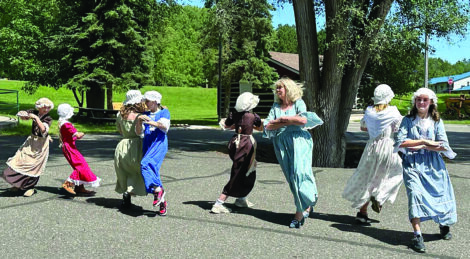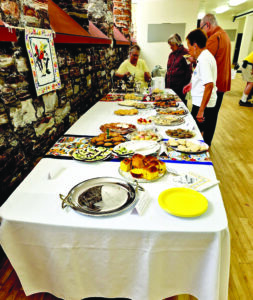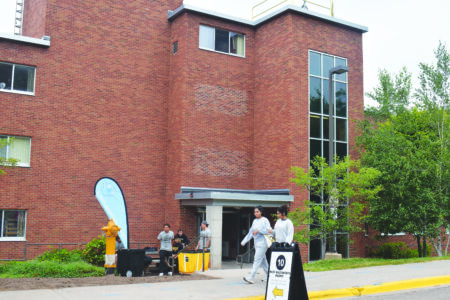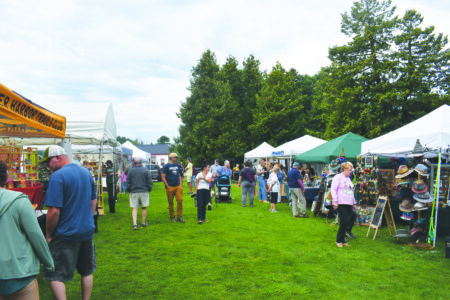A taste of Cornwall
Keweenaw Kernewek tea kicked off Pasty Fest

Graham Jaehnig/Daily Mining Gazette Graham Jaehnig/Daily Mining Gazette The Cornish heritage group Keweenaw Kernewek hosted a Cornish Tea Friday to kick off Calumet’s Pasty Fest, showcasing other Cornish delicacies in addition to the pasty.
CALUMET – Keweenaw Kernewek started Pasty Fest 2025 with a celebration of Calumet’s Cornwall connection Friday by hosting a Cornish Tea in the Keweenaw Heritage Center’s Bob Langseth Sandstone Hall.
The event was initially planned to follow a rededication ceremony of a plaque commemorating Calumet’s sister city, Camborne, in Cornwall. Although the ceremony had to be postponed until Sept. 12, the Cornish Tea event continued as planned, enjoying a large turnout.
For the event, Kernewek members prepared a wide variety of authentic Cornish treats. Samplings included baked scones with clotted cream and jam and, of course saffron buns and saffron cookies. The event demonstrated that there is much more to Cornish cuisine than the pasty.
“There are a lot of things here that are traditional Cornish ‘nicies,’ as (the Cornish) call those,” said Kernewek member Cornish Tea Committee volunteer Jean Ellis.
Cornish Tea is relatively recent tradition in terms of Cornwall’s history. Dating back to the 19th century, emerging in Cornwall’s tearooms and cottages. Saffron-based bakery dates back much earlier.
While some theorize saffron arrived in Cornwall as early as the 14th century, brought by merchants who traded it for Cornish tin. Cornish tin trade embraced European centers like Madeira and Spain, where traders acquired saffron as trade good. In the 19th century, saffron buns became associated with Methodist Sunday School events and have been traditionally served at public festivals. An established Copper Country tradition since the 19th century, spiced buns, brushed with a saffron-based wash, and marked with a cross, originated in Cornwall.
Calumet and Camborne, as sister cites, or twin towns, in Cornwall, have many similarities, Ellis said. “We’re twinned with Cornwall,” she said,
Both Camborne and Calumet are known throughout the world for their mining heritage. In 1801, according to Cambornetown.com, 75 mines operated in Camborne. By 1862, that number had risen to 340. Among the most famous is the Dolcoath mine, once one of Cornwall’s leading copper and tin producers.
As the mining began to decline in Cornwall in the 19th century, thousands of Cornish miners found their way to the Upper Peninsula, many of whom arriving in Calumet, which became a very prosperous town similar to what Camborne had achieved. Each could lay claim to having the deepest mine in its area, Ellis posted on a social media site titled Nostalgic Camborne.
“Each has experienced economic decline, even blight, after mining ceased,” Ellis posted. “In spite of that, each has intense pride in its heritage and a strong interest in preservation. Each has achieved status as a heritage site. Calumet is home to the Keweenaw National Historical Park; Camborne is part of a World Heritage Site.”
Camborne and Calumet “twinned,” or became sister cities, in May, 2009. Keweenaw Kernewek was formed in 1992 to preserve the history of the Cornish settlers in the Copper Country. Most of its members are of Cornish ancestry, and many visit Cornwall frequently. The organization welcomes interested people to attend the monthly public meetings, scheduled for 6:00 PM the second Thursday of each month, usually held at the Hut Restaurant.






